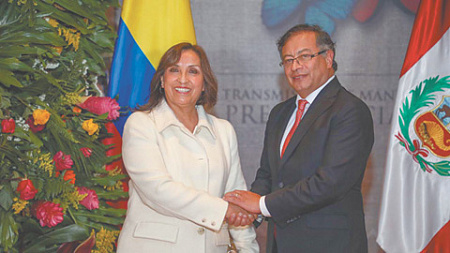
A long-dormant territorial dispute in the heart of the Amazon has flared up between Colombia and Peru, after Colombian President Gustavo Petro accused his neighbor of annexing Santa Rosa Island. The island, located on the Amazon River at the tri-border with Brazil, has been under de facto Peruvian control for decades, but Petro’s recent and forceful claim threatens to destabilize relations in a region where such disagreements have historically escalated into armed conflict.
The immediate spark for the revived controversy was a decision by the Peruvian government in July to grant Santa Rosa, home to about a thousand Peruvian citizens, the status of an independent administrative district. For Bogotá, this move formalized an unacceptable claim. President Petro has announced plans to visit the nearby Colombian city of Leticia, signaling a personal investment in the issue that has put Lima on high alert. The Peruvian government, however, has so far reacted with restraint, with President Dina Boluarte proceeding with a scheduled state visit to Japan rather than convening an emergency meeting.
At the heart of the dispute are treaties from 1922 and 1929 that established the border along the main channel of the Amazon River. Peru argues these agreements support its claim. Colombia counters that the island itself formed naturally from river sediment in the 1960s, long after the treaties were signed, rendering them inapplicable. Bogotá also points out that the island is geographically closer to the Colombian bank, suggesting the deeper main channel of the river, the designated border, likely flows on the other side.
Analysts suggest Petro’s sudden focus on the remote island may be a calculated political maneuver to divert public attention from pressing domestic issues. The Colombian president is grappling with historically low approval ratings, hovering around 64% disapproval, amid growing discontent over his failure to address poverty and crime. His government also faces significant protests from farmers in the Boyacá province over new environmental regulations. Reviving a nationalist cause is a well-worn tactic in South American politics to rally support, seen in disputes like Venezuela’s claim on Guyana’s Essequibo region and Bolivia’s quest for sea access from Chile.
Complicating the dynamic is the ideological friction between the two leaders. Petro, a former leftist guerrilla, has been openly critical of Peruvian President Dina Boluarte, who took office after the impeachment of her left-wing predecessor and political ally of Petro, Pedro Castillo. While Petro’s rhetoric has been sharp, his foreign ministry has adopted a more diplomatic tone, formally requesting a resumption of bilateral talks to find a peaceful resolution for Santa Rosa’s status. Lima has reportedly agreed to engage in negotiations, offering a pathway to de-escalate the conflict.
